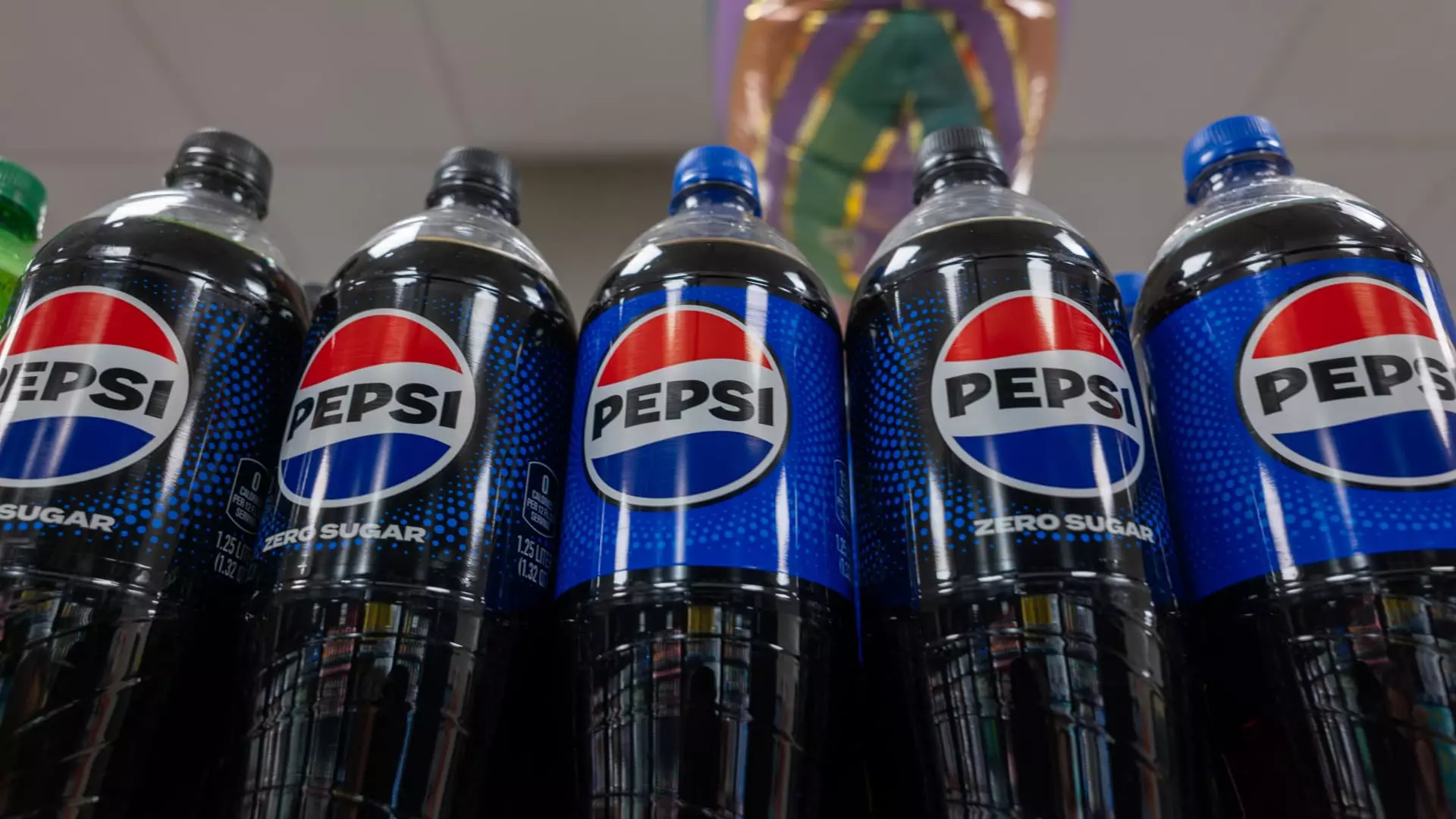PepsiCo’s recent quarterly results have not painted a rosy picture of the food and beverage behemoth that many investors had hoped for. With reports revealing a notable decline in North American demand, a region critical to its core business, the company’s leadership finds itself in a complex scenario where past strategies may no longer yield the desired outcomes. As consumers become increasingly price-sensitive due to rising inflation and shifting shopping habits, the challenge for PepsiCo is not just about maintaining market share but revitalizing its entire North American operations. It’s imperative that the company acknowledges this critical juncture; otherwise, it may find itself grappling with stagnant growth and declining relevance in a fiercely competitive landscape.
Global Trade Uncertainty and Supply Chain Bruises
CEO Ramon Laguarta pointed to a landscape riddled with “volatility and uncertainty,” particularly regarding global trade developments. His cautious tone resonates with reality as tariffs and economic instability continue to weigh down operational costs. By forecasting stagnant earnings, PepsiCo is signaling a pivotal moment in its growth strategy that cannot be ignored. It’s a stark reminder that, in an era where globalization intertwines with local economies, external factors—such as governmental policies and international relations—can lead to disastrous consequences for corporations that may have once flourished without these burdens. The specter of increased supply chain costs looms large, and it challenges the traditional approaches to cost management and efficiency that PepsiCo has relied on in the past.
Innovation Amidst Consumer Caution
While the numbers tell a bleak story, there are flickers of hope within the report that hint at PepsiCo’s adaptive strategies. The company’s moves towards multicultural and functional products, as evidenced by acquisitions like Poppi, signal that they are attempting to innovate in response to changing consumer preferences. This adaptability is crucial—not just for driving sales but also for engaging a diverse consumer base that seeks authenticity and personal connection from brands. The challenge remains in balancing these innovative initiatives against a backdrop of rising costs and subdued market demand. PepsiCo’s ability to successfully roll out these products could very well determine whether it climbs out of the mire or remains mired in sluggish sales.
The Value-Driven Consumer: A New Reality
Laguarta and CFO Jamie Caulfield have made a critical observation: today’s consumers are more value-conscious, driven by both economic pressures and changing shopping patterns. This shift necessitates a deeper understanding of the evolving consumer landscape. For PepsiCo, a historical titan in the industry, the time has come to dig beneath the surface and truly understand what “value” means to its consumers. Embracing this mindset requires integrating more meaningful engagement and transparency into marketing strategies—an approach that may prove transformative. The results should not merely be about the bottom line but also how effectively the company connects with the consumers who ultimately dictate its fate.
A Mixed Bag of Performance: The Fragile Gains
Despite the overall disappointing results, one could argue that there are bright spots within PepsiCo’s performance metrics. The rise of Pepsi Zero Sugar and the success of Miss Vickie’s chips and Quaker’s rice cakes underscore the reality that certain segments are thriving even as others falter. This duality exemplifies a key lesson that PepsiCo must embrace: the importance of segmenting and nurturing its diverse product portfolio while simultaneously reassessing its core offerings. The mixed bag of performance serves as a reminder that while one sector may struggle, another could be ripe with opportunity—an observation that must shape strategic decisions moving forward.
Future Outlook: The Need for Realistic Appraisal
In the wake of downgrading its earnings forecast, PepsiCo finds itself at a crossroads; it will take not just strategic redirection but also a candid appraisal of its own operations to initiate change. Holding onto outdated strategies will only prolong the company’s struggles. As more brands vie for consumer attention in an ever-evolving marketplace, it’s critical for PepsiCo to embrace innovation without losing sight of value-driven consumer needs. The road ahead will certainly be fraught with challenges, but it’s imperative for the company to seize this moment, recalibrate its objectives, and emerge as a resilient player in this fast-paced industry, for the stakes are too high to do otherwise.

Leave a Reply